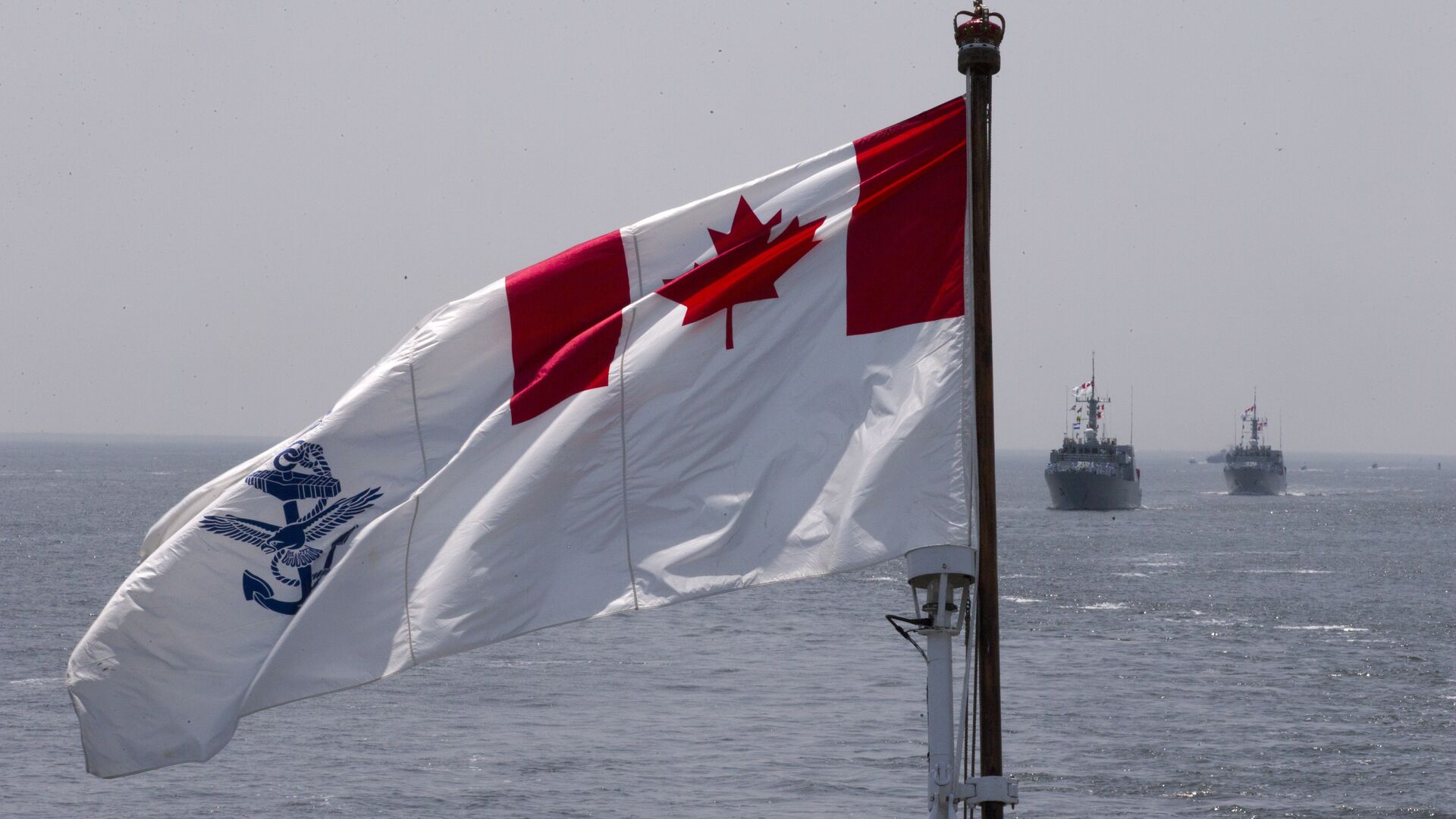https://sputnikglobe.com/20230721/unexploded-wwii-bombs-found-in-us-navy-shipwreck-off-canadian-coast-1112025456.html
Unexploded WWII Bombs Found in US Navy Shipwreck Off Canadian Coast
Unexploded WWII Bombs Found in US Navy Shipwreck Off Canadian Coast
Sputnik International
More than a dozen unexploded bombs were discovered in the shipwreck which dates back to 1942.
2023-07-21T04:05+0000
2023-07-21T04:05+0000
2023-07-21T04:02+0000
beyond politics
bomb
unexploded bombs
ship
ship wreckage
royal canadian navy
https://cdn1.img.sputnikglobe.com/img/104668/05/1046680587_0:261:5013:3081_1920x0_80_0_0_87d3f040a36b62a092a0f7273c331e7e.jpg
The Royal Canadian Navy announced on Thursday that divers discovered more than a dozen unexploded bombs and artillery projectiles in a US Navy shipwreck off the coast of Newfoundland. The US Navy ships that make up the wreckage are the USS Pollux and the USS Truxtun, which ran aground during a heavy storm on February 18, 1942 in St. Lawrence Harbor.“The more than 180 survivors owed their rescue in large part to the tireless, and in many cases, heroic actions of the people of St. Lawrence,” the records state.Officials from the Maritime Explosive Ordnance Disposal and the Port Inspection units have surveyed the wreck, the Royal Canadian Navy said."A comprehensive examination is ongoing to assess the presence and potential risk of explosive materials," the Royal Canadian Navy said. "Safety is our paramount concern - we spare no effort in our mission to safeguard the public."The practice of disposing of military munitions at sea was first banned by the Department of Defense in 1970. Congress then passed the Marine Protection, Research, and Sanctuaries Act (MPRSA), also known as the Ocean Dumping Act, which regulates and prohibits disposal of material in to the ocean that would “unreasonably degrade or endanger human health, welfare, or amenities, or the marine environment, ecological systems, or economic potentialities.”The Canadian government has warned that unexploded ordinances can be more ubiquitous than what is found amongst a World War II shipwreck.“Unexploded Explosive Ordinances (UXO) can also move or be exposed over time. Freeze-thaw cycles, flooding, forest fires, and storms can uncover buried ordnance or move it from place to place. It can also become more unstable and more dangerous over time. It doesn’t matter how old a UXO is, whether it’s 20 or 100 years old, it can still be very dangerous,” the Canadian government explained.“A simple rule of thumb is to not touch or disturb any rusted metal that you find on the ground or in the water. This is a good idea even if you are not in an area that was previously used for military training, as any unknown rusted metal can be hazardous,” they add, urging anyone who comes across an UXO to call 9-1-1 or the local police as soon as possible.
Sputnik International
feedback@sputniknews.com
+74956456601
MIA „Rossiya Segodnya“
2023
News
en_EN
Sputnik International
feedback@sputniknews.com
+74956456601
MIA „Rossiya Segodnya“
Sputnik International
feedback@sputniknews.com
+74956456601
MIA „Rossiya Segodnya“
unexploded bombs, uxo, ship wreckage, shipwreck, wwii, history, royal canadian navy, navy, canada
unexploded bombs, uxo, ship wreckage, shipwreck, wwii, history, royal canadian navy, navy, canada
Unexploded WWII Bombs Found in US Navy Shipwreck Off Canadian Coast
The World War II shipwreck saw more than 200 people die, with just 180 making it to land safely on February 18, 1942; its legacy now holds more than a dozen unexploded bombs.
The Royal Canadian Navy announced on Thursday that divers discovered more than a dozen unexploded bombs and artillery projectiles in a US Navy shipwreck off the coast of Newfoundland.
The US Navy ships that make up the wreckage are the USS Pollux and the USS Truxtun, which ran aground during a heavy storm on February 18, 1942 in St. Lawrence Harbor.
Those who were aboard the ship attempted to haul their lines ashore and were unable to do so after the lines became “oil-soaked,” US military records said. Crew members who attempted to swim ashore were unsuccessful.
The records reveal that at some point during the storm, lines from a boatswain’s chair were “rigged to a ledge” and some of those who were still aboard were finally able to get to shore.
“The more than 180 survivors owed their rescue in large part to the tireless, and in many cases, heroic actions of the people of St. Lawrence,” the records state.
Officials from the Maritime Explosive Ordnance Disposal and the Port Inspection units have surveyed the wreck, the Royal Canadian Navy said.
"A comprehensive examination is ongoing to assess the presence and potential risk of explosive materials," the Royal Canadian Navy said. "Safety is our paramount concern - we spare no effort in our mission to safeguard the public."
The practice of disposing of military munitions at sea was first banned by the Department of Defense in 1970. Congress then passed the Marine Protection, Research, and Sanctuaries Act (
MPRSA), also known as the Ocean Dumping Act, which regulates and prohibits disposal of material in to the ocean that would “unreasonably degrade or endanger human health, welfare, or amenities, or the marine environment, ecological systems, or economic potentialities.”
The Canadian government has warned that unexploded ordinances can be more ubiquitous than what is found amongst a World War II shipwreck.
“Unexploded Explosive Ordinances (UXO) can also move or be exposed over time. Freeze-thaw cycles, flooding, forest fires, and storms can uncover buried ordnance or move it from place to place. It can also become more unstable and more dangerous over time. It doesn’t matter how old a UXO is, whether it’s 20 or 100 years old, it can still be very dangerous,” the Canadian government explained. “A simple rule of thumb is to not touch or disturb any rusted metal that you find on the ground or in the water. This is a good idea even if you are not in an area that was previously used for military training, as any unknown rusted metal can be hazardous,” they add, urging anyone who comes across an UXO to call 9-1-1 or the local police as soon as possible.


